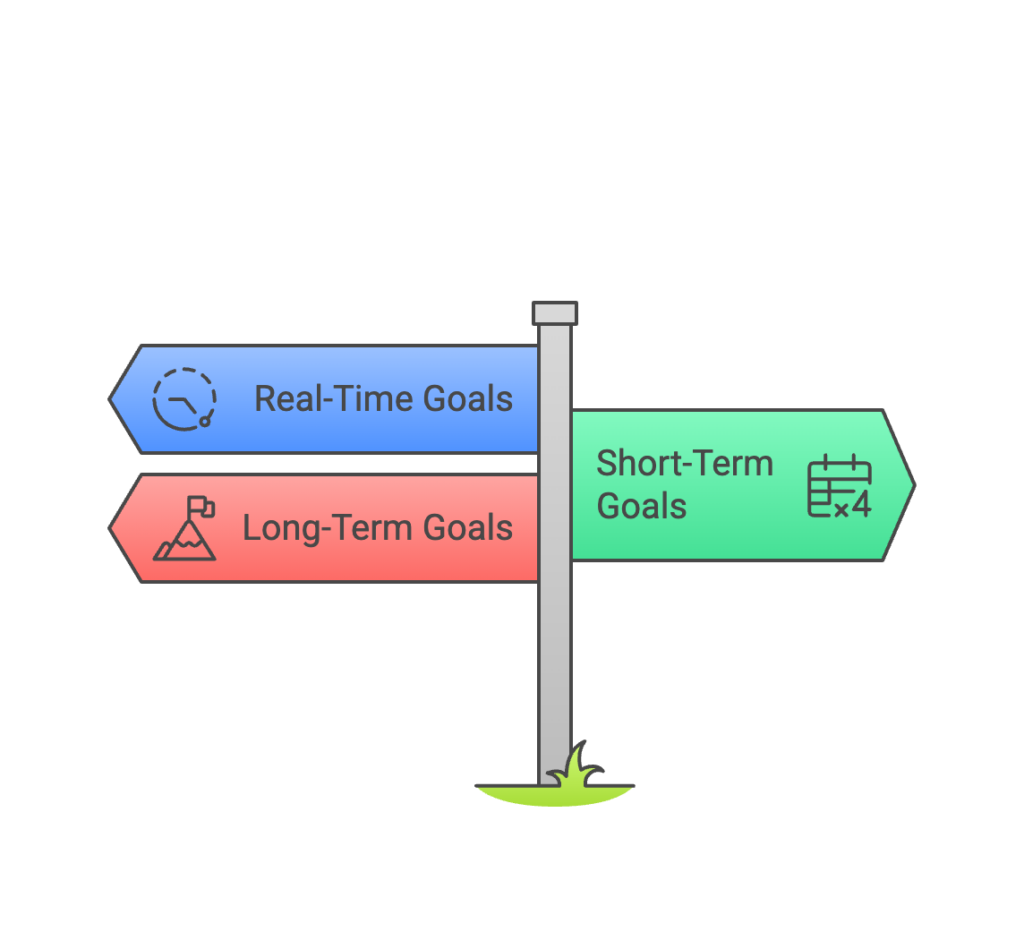Retail Success Requires Adaptive Goal Setting
Retail moves fast. Customer foot traffic fluctuates, promotions don’t always land, and staffing issues can throw off even the best-laid plans. Sticking to rigid sales goals in such a dynamic environment doesn’t work. Adaptive goal setting in retail helps stores stay agile by adjusting targets based on real-time store conditions, customer behavior, and inventory trends.
Instead of setting a fixed revenue goal for the month, retailers should break goals into daily, shift-based, or even hourly targets that account for in-store conditions. If foot traffic is low, the focus can shift to upselling or increasing transaction value. If inventory isn’t moving, team efforts can pivot toward promotions or strategic product placement. The key is to set goals that match what’s happening in the store, not just what was planned weeks ago.

Retail Goals Should Be Built for Change
Static goals fail in a world where trends shift overnight. The best retailers set goals that move with their business, allowing them to respond to unexpected challenges and opportunities. This means using real-time data to tweak goals throughout the day. If sales for a certain product are lagging, managers can shift the focus to promotions, adjust pricing, or relocate the product to a high-traffic area.
Another challenge is employee motivation. If workers feel like they’re constantly chasing impossible numbers, they disengage. Adaptive goal setting ensures that employees are chasing goals that feel achievable. Instead of saying, “We need to hit $30,000 in sales today,” break it down: “Let’s increase average transaction value by $5 per customer this afternoon.” Smaller, more actionable goals keep morale high and performance steady.
Why SMART Goals Alone Don’t Work in Retail
The SMART framework (Specific, Measurable, Achievable, Relevant, Time-bound) is great in theory, but retail requires an even more flexible approach. Setting a quarterly sales goal that doesn’t factor in shifts in consumer behavior, staffing shortages, or unexpected slow days can set a team up for failure. Retailers need fluid goals that adjust when real-world conditions change.
For example, rather than aiming to “increase sales by 10% this quarter,” retailers should set micro-goals like “boost weekend foot traffic by running a limited-time discount” or “increase conversion rates by 5% by improving product demos.” These types of goals respond to immediate retail conditions, rather than sticking to static, long-term objectives.
📌 For more on setting realistic retail targets, check out Harvard Business Review.
What Makes a Retail Sales Goal Effective?
A great retail sales goal does more than set a number—it drives actionable strategies. Retail managers should focus on three key elements:
1. Tied to Behavior, Not Just Numbers – Instead of a revenue goal, focus on actions that lead to sales. Examples include “increase the number of customer interactions per employee by 20%” or “upsell at least two items per sale during checkout.”
2. Short-Term & Adaptive – Long-term goals may not adjust to market fluctuations. Breaking goals into daily or even shift-based targets ensures that strategies remain relevant.
3. Motivating & Achievable – If a goal feels impossible, employees tune out. Goals should challenge, not discourage. A store struggling with foot traffic might set an achievable goal to boost customer engagement by ensuring every shopper is greeted within 10 seconds of entering.
📌 Explore more about retail goal tracking at Retail TouchPoints.
How to Keep Employees Engaged in Sales Goals
A goal is useless if employees don’t care about it. One of the biggest challenges in retail is keeping staff motivated to meet performance targets. The best way to do this is making goals feel personal and attainable.
First, retailers should involve employees in the goal-setting process. If they help shape the objectives, they are more likely to commit to them. Instead of handing down a sales quota, managers can ask employees, “What do you think we can realistically achieve today?” This small shift in approach makes a huge difference in engagement.
Second, reward incremental progress. A large sales goal that takes weeks to reach can feel abstract, but breaking it into small wins keeps employees energized. Even simple recognition—“Great job hitting that mid-day goal!”—reinforces positive behavior.
Lastly, ensure goals align with employee strengths. Not every retail worker is a natural salesperson, but they may excel in customer service or product demonstrations. Setting personalized goals based on individual strengths improves storewide performance.
Retail Success is About More Than Just Sales
While sales targets are important, effective goal setting in retail extends beyond just hitting revenue numbers. The best retailers set goals that focus on customer experience, inventory management, and team efficiency.
- Customer Engagement Goals – How many customers interacted with staff today? How long did they spend in-store?
- Inventory Efficiency Goals – How quickly are seasonal products moving? Are slow-moving items getting enough visibility?
- Operational Goals – How long are customers waiting in line? How quickly are orders being fulfilled?
Balancing these different types of goals ensures that the store runs smoothly and profitably.
Stay Flexible, Stay Successful
The most successful retailers aren’t just the ones that set ambitious sales goals. They’re the ones that adapt those goals when conditions change. Instead of rigid, long-term targets, modern retailers use real-time adjustments, short-term goals, and employee-driven strategies to keep their stores moving in the right direction.
Retail is unpredictable—but your goals don’t have to be. When adaptive goal setting becomes part of the strategy, both employees and customers benefit, and success becomes much easier to achieve.




